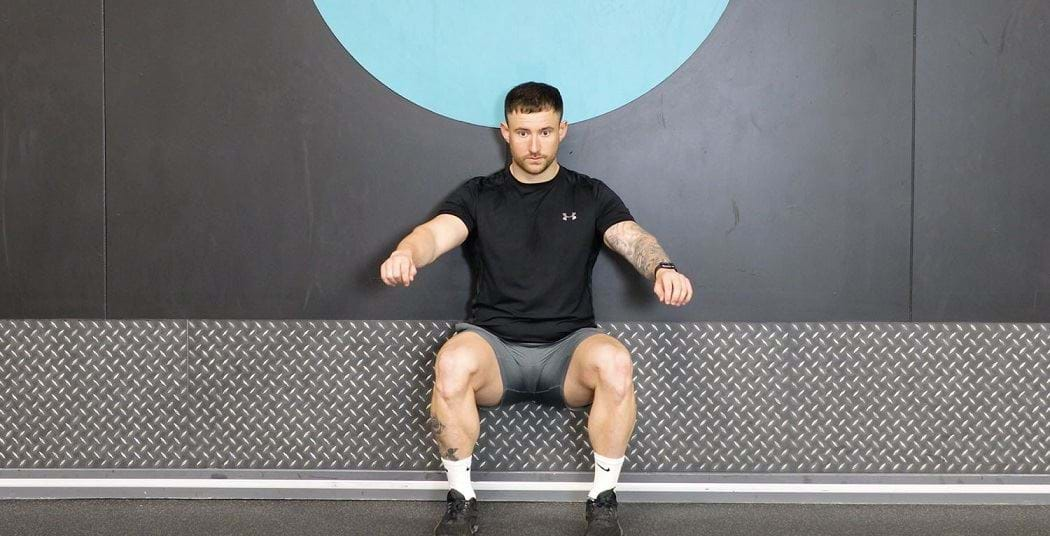Wall Sits
What Is A Wall Sit?

Wall sits are an isometric exercise that targets the lower body muscles, particularly the quads. Sometimes called wall squats, this exercise involves maintaining a parallel squat position against the wall for a period of time.
Wall sits are great for building strength and endurance in the quads, glutes, and calves, without putting the joints under a lot of strain. While it looks easy, isometric exercises can cause some serious cramping, and most people will feel their quads burning during wall sits – practicing them regularly is great for building mental resilience and focus. Wall sits can also help to improve core strength and stability, posture, and balance.
We’ve covered both wall sits and loaded wall sits below.
Check out our other wall sit variations: single leg wall sit.
Commonly Asked Questions On Wall Sits
Wall sits are good for knees as they strengthen all the muscles that support the joint, without exposing the knees to high impact or pressure.
Wall sits are not better or worse than squats. While wall sits can be used as an alternative to squats, they serve different purposes. Squats help to build strength in a range of movement, power, and muscle mass, while wall sits build strength in a squat position, and stamina. Most people benefit from including both in their training. But if you find squats painful, wall sits can be a great tool to build up the strength and stability needed to progress to squats, or as an alternative to squats.
While wall sits can help to increase strength, they are not very effective for building muscle mass. This is because you would need to hold wall sits for a long period of time, with this time increasing each week. Adding a weight can make this more challenging and will help with building muscle.
Wall sits cannot reduce thigh fat – no exercise is able to spot reduce fat from the thigh or any other part of the body. While wall sits can help to tone the thighs, you will need to create a calorie deficit to reduce fat.
Wall Sit Tips
Having good form is key to ensuring the muscles in the legs and core are correctly engaged during the wall sit. Ensure your feet are positioned to allow your knees to bend at a 90 degree angle, and keep your back flat against the wall with your core engaged.
You can shift tension to different muscle groups by pressing through different parts of the feet. For more focus on the quads, press the through the balls of the feet. For more of a glute focus, press through the heels, and to activate the hamstrings more, pull the heels backwards.
How To Do A Wall Sit
Stand with your back against a wall and place your feet flat on the floor, hip-width apart, around 1-2 feet in front of you.
Engage your core and lower your torso until your legs are bent at a 90 degree angle. Keep your back, glutes, and head flat against the wall. You can keep your arms to your side or extended forward for balance.
Hold this position for the amount of time desired, making sure to keep your core and glutes engaged.
To finish, stand up by driving down through your heels.
How To Do A Loaded Wall Sit
Bend your knees until your thighs are parallel to the floor with knees stacked over your ankles. Your back should be against the wall.
Engage your core and place the weight on your thighs and hold this position for your desired time.
Hold this position for the amount of time desired, making sure to keep your core and glutes engaged.
To exit, push up through your heels to extend your legs.
If you’re not sure if any of the above exercises are suitable for you, please consult your doctor before you start it. Need guidance on how to perform the exercise? Ask a personal trainer at your gym.